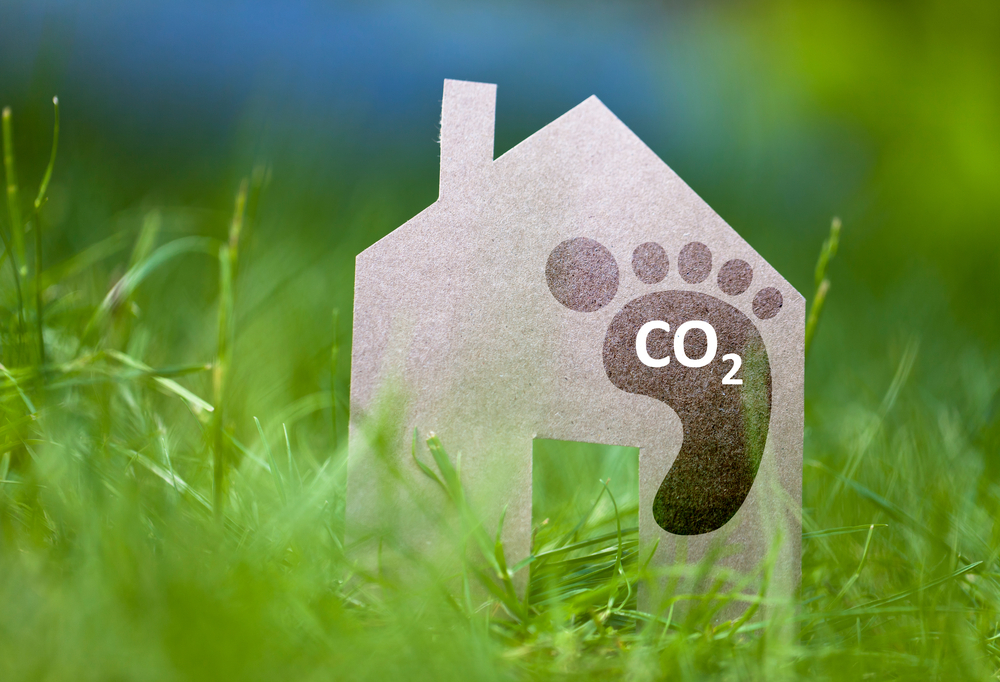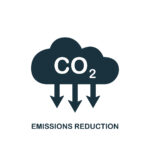
The Three Components of Carbon Footprints
Carbon footprints consist of three main components:
- Direct emissions from sources owned or controlled by the entity being measured. This includes any activity which results in the release of carbon dioxide (CO2) into the atmosphere such as burning fossil fuels for transportation, heating or electricity generation.
- Indirect emissions associated with purchased goods, services and energy use. This includes services used by individuals or organisations like manufacturing processes and supply chain operations. Indirect emissions are linked to purchasing products or services made using fossil fuel-based energy.
- Organisational processes that create additional GHG emissions after production has been completed. Organisations may also have other processes which generate GHGs, such as waste disposal practices that must be accounted for when calculating their overall carbon footprint.
Understand how each component contributes to your total carbon footprint can help you effectively reduce it through targeted strategies. These might include investing in renewable energy sources like wind or solar power, improving operational efficiency through reduction of wasted resources, shifting away from high emission materials during product design stages or switching suppliers who offer more sustainable options.
Home Carbon Footprint
Calculating your home carbon footprint can be a daunting task. There are four key aspects to consider:
- Home Energy Use
- Heating Sources
- Transportation Habits
- Waste Management Practices
Energy used in the home can account for up to half of all emissions related to personal activities. The main source of this energy usage comes from heating sources such as gas boilers and heat pumps. Transportation habits such as driving or commuting via public transport also generate significant amounts of greenhouse gases due to their reliance on fossil fuels like petrol and diesel fuel.
It is beneficial to assess how much waste you generate at home and find ways to reduce consumption so that less goes into landfills, where methane production contributes significantly to global warming and climate change.
By considering these factors associated with one’s own lifestyle choices, individuals can begin to understand what impacts they have on the environment and work towards reducing their overall carbon footprint.
Personal Strategies to Reduce Emissions
With some thought and effort, individuals can take steps to reduce their own impact on climate change by implementing low-carbon diets and energy-saving tips among other things. Like a ripple in a pond, these slight changes made at an individual level will eventually add up and create meaningful reductions in global greenhouse gas emissions.
The first step towards achieving this goal is to commit to living with greater awareness of how our daily activities influence the environment.
- Try eating more plant-based meals as meat production has been linked to excessive methane emissions from cows.
- Buying locally sourced produce helps minimise food miles and reduces landfill waste associated with long distance shipping logistics.
- Unplugging electrical devices when not in use or switching off lights when leaving a room – both minor actions that deliver savings over time.
- Investing in green technology products like LED lightbulbs often pays dividends through reduced electricity bills.
- Reusing items rather than throwing them away prevents unnecessary consumption of new materials.
- Taking public transportation instead of driving alone cuts down on fuel costs – another win-win situation!
Sustainable practices help to conserve the planet’s resources and usually come with financial benefits too.
Corporate Strategies to Reduce Emissions
Companies can pursue a variety of corporate strategies to reduce emissions. One strategy is shifting the energy mix used in their operations.
Here are some tips for companies to significantly reduce their overall impact on the environment without sacrificing profitability or productivity levels:
- Switch from fossil fuels to renewable sources such as solar, wind, or hydropower. Doing so has become more cost-effective and provides economic benefits due to subsidies and other incentives for using low-carbon technologies.
- Optimise existing processes by reducing waste production or increasing efficiency. This could involve implementing innovative technology that monitors environmental performance and curbs energy consumption.
- Maximise recycling efforts. Use recyclable materials whenever possible and ensure proper disposal of nonrecyclables
- Research alternative materials that have lower carbon footprints
- Educate employees about efficient practices when it comes to resource management and transportation choices like carpooling or taking public transit instead of individual cars where feasible.
Read more about carbon credits and offsets on our Carbon Offset Guide.
What is a Carbon Footprint?
A carbon footprint is a measure of the total greenhouse gas emissions produced by an individual, organisation or event. It helps us to understand how much energy we use and what type of emissions are being produced and helps us to measure our environmental impact.
Act now! Calculate your carbon footprint using our Carbon Offset Calculator.
Related:


